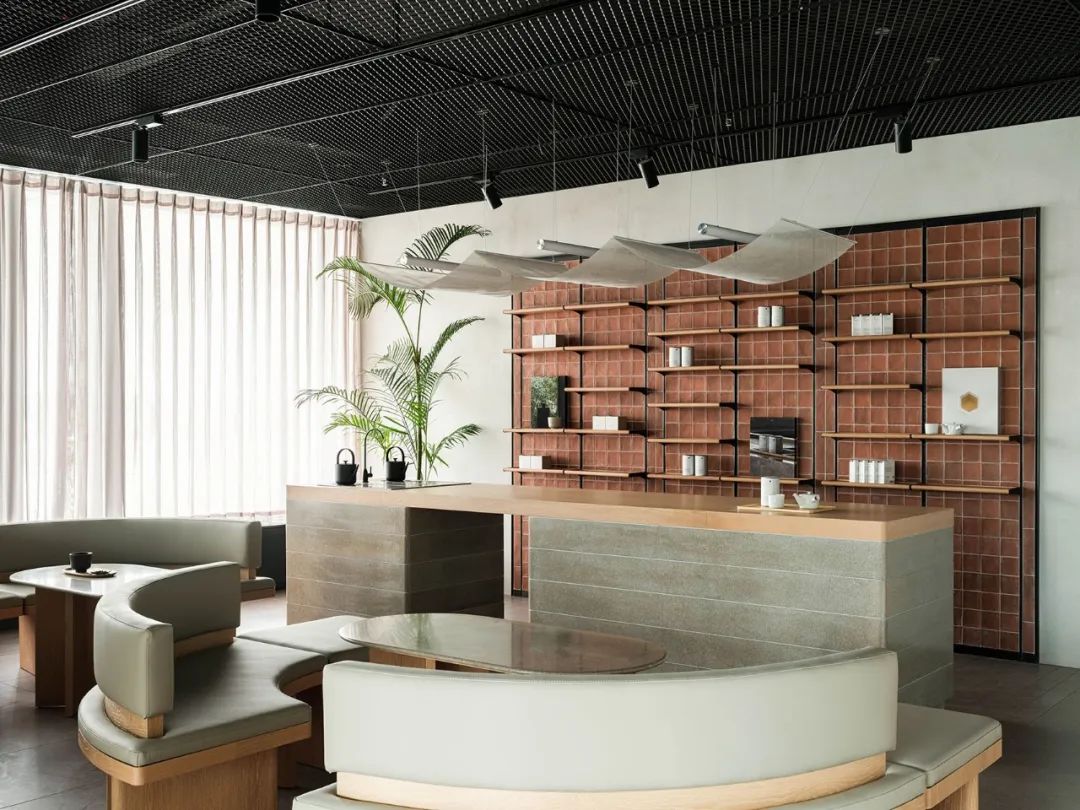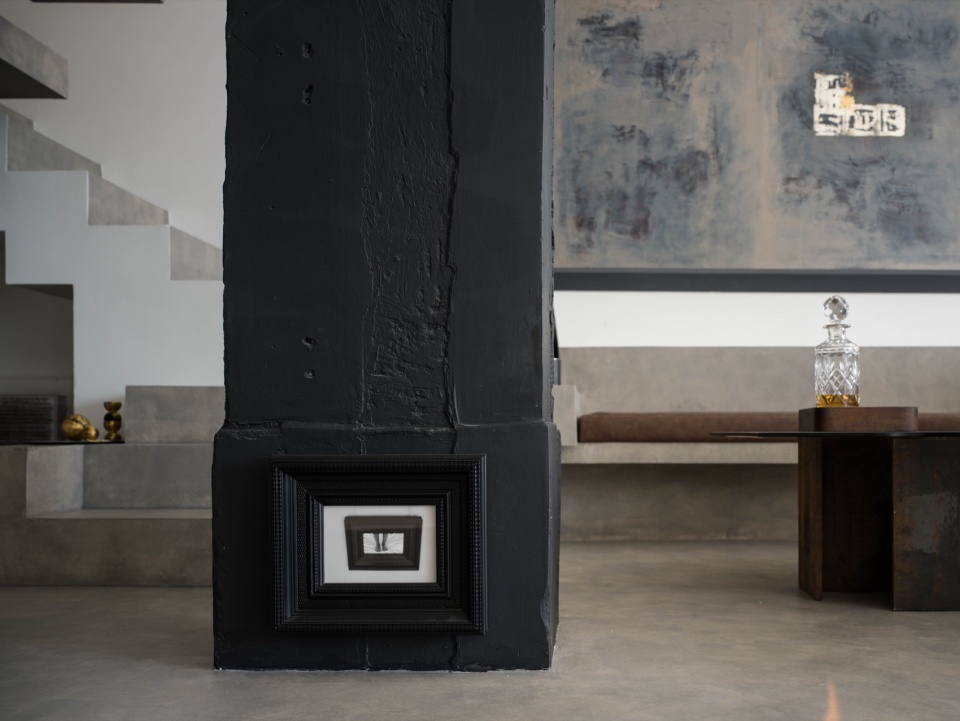

一.桥与石
Bridge and Stone
杭州自古多桥,《钱塘县志》提及:“钱塘居民稠密,百步十寻,辙有桥梁以通往来。”元代马可·波罗在游记中写到“行在杭州,环城诸水,有石桥一万二千座”。开门见水,遇水搭桥,桥是连接与沟通的重要建筑物,也象征着平等与广度。我们正以这样的主旨,希望营造出一个连接本地与品牌的空间。开门进入空间,迎面正中心体量巨大的中央水槽正是“桥”这一概念的具象化缩影。人在桥边或漫步或停留,龙头流出的水与飞架于其上的条形荒料石板,为“连接”生出动态的情境。
Hangzhou is characterized by its numerous bridges. The “Qiantang County Records” states: “The residents of Qiantang are densely populated, with bridges every hundred steps and ten paces, with tracks and bridges for passage.” In the Yuan Dynasty, Marco Polo wrote in his travelogue: “Traveling in Hangzhou, surrounded by various waters, there are twelve thousand stone bridges.” We interpreted such bridge structures as symbols of connection and communication, equality and breadth. With this theme in mind, the space is itself conceived as a bridge between the global brand and its Hangzhou context. When entering the space, the huge water sink in the center is a concrete manifestation of the concept. People can stroll or stop by “the bridge”, where the water flowing from the tap and the rectangular stone slabs bridging it create a dynamic context for “connection”.
▼店铺外观,Exterior © Jonathan Leijonhufvud, courtesy of Aesop
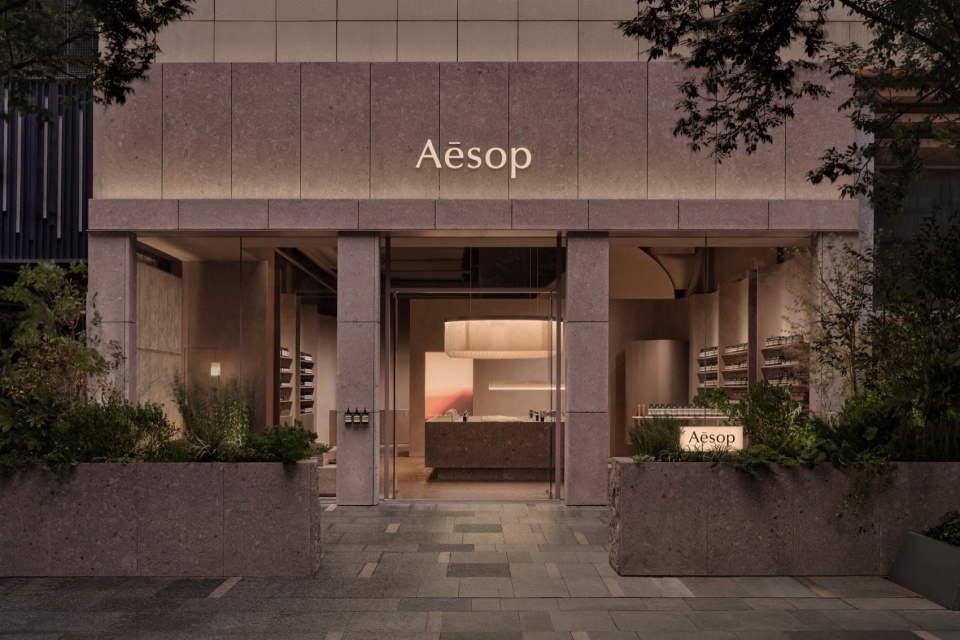
古桥多因地制宜。杭州城外的诸暨县盛产一种名为“高湖石”的石材,自清道光年间开始开采已有百年悠久的历史。其石质坚硬,色泽古朴典雅,一直被用来修造桥梁道路、寺院古刹。我们在勘察场地时欣喜的发现,他几乎出现在杭州市政道路的各处。一直被较为粗犷使用的石料,细看其花纹却有生动且细腻的美感。
▼概念分析,concept © 刷刷建筑
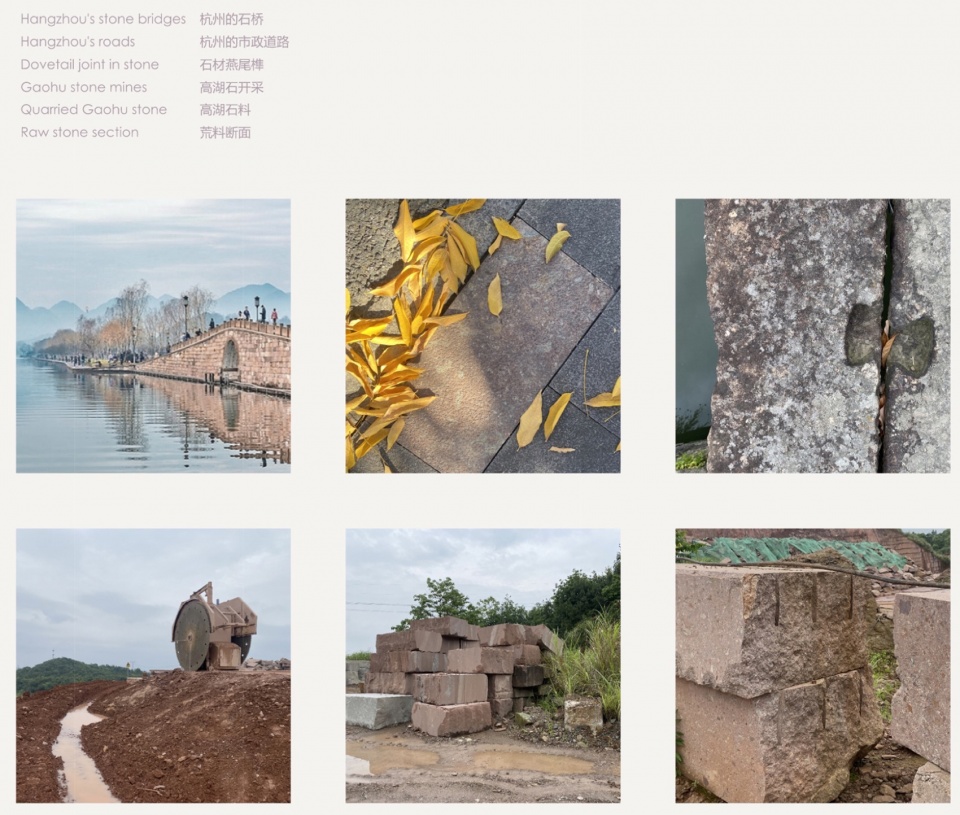
Ancient bridges are mostly constructed with local material. Zhuji County outside Hangzhou is rich in a kind of stone called “Gaohu Stone”, which has been mined for hundred years since the Daoguang period of the Qing Dynasty. Due to excellent quality of durability and elegant colour, it has typically used in the aforementioned bridges, roads, and ancient temples. When we had our site survey, we were delighted to find that it appeared almost everywhere in Hangzhou’s roads. The stone, which has always been used roughly, has a vivid and delicate beauty upon closer inspections.
▼室内空间概览,Overall view of interior space © Jonathan Leijonhufvud, courtesy of Aesop
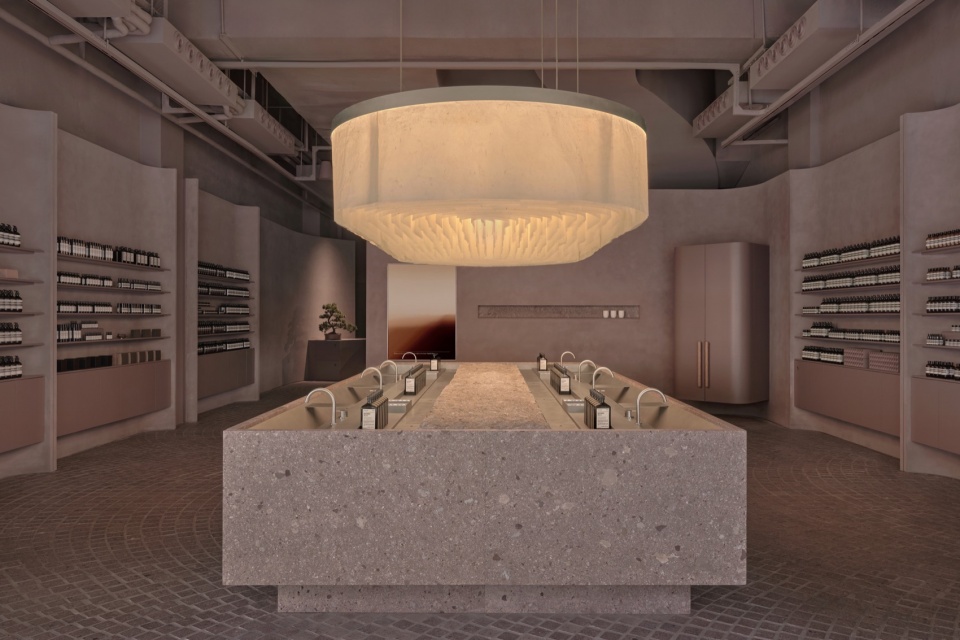
效仿古人,就地取材,我们将不同大小、不同加工方式的高湖石运用于室内外,放在一起就像是同一种材料的交响乐:石材从山中开采时因劈开而自然形成的荒料肌理充满大自然原生的力量,被用于塑造柱廊、中央水槽;大块的抛光石板可以将石材本身的花纹清晰表达,被用于室外的花园与石凳;10cm见方的锤击纹小石块满铺室内地面,为漫步其中增加多一层次的触觉体验。
▼空间轴测,space axo © 刷刷建筑
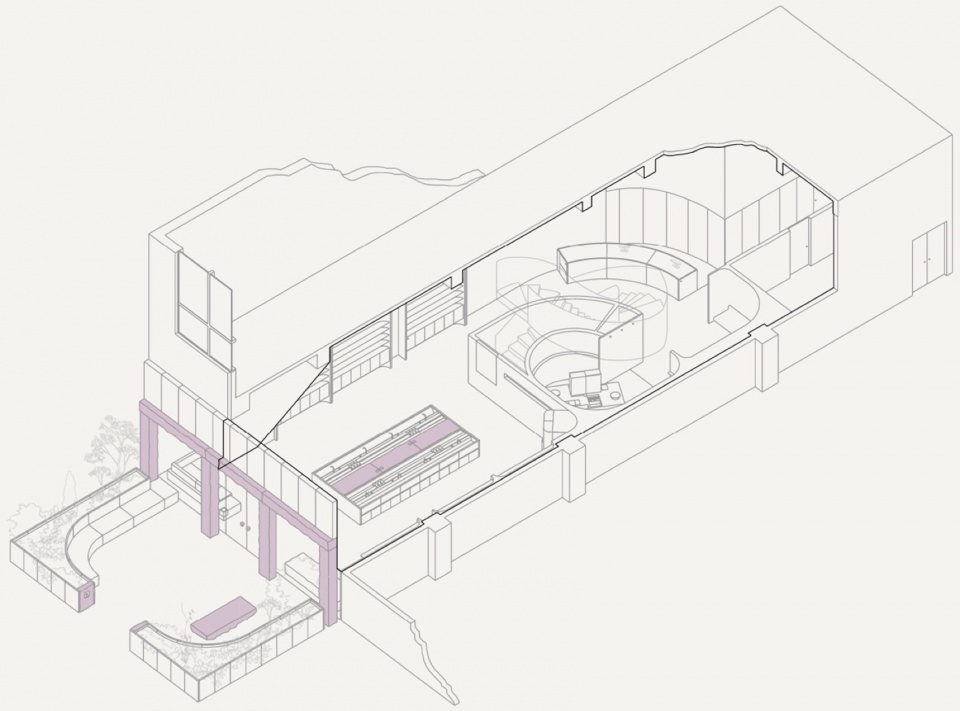
Following the example of the ancients, we use local materials and apply Gaohu stones of different sizes and processed in different ways both indoors and outdoors. Putting them together is like a symphony of the same material: the texture of the raw stone naturally formed when it was mined from the mountain is full of the original power of nature and is used to shape the colonnade and central sink; large polished stone slabs can clearly express the pattern of the stone itself and are used in outdoor gardens and stone benches; small stones with hammered texture of 10 cm square are spread all over the indoor floor, adding an extra level of tactile experience to step on it.
▼商品展示,Product display © Jonathan Leijonhufvud, courtesy of Aesop
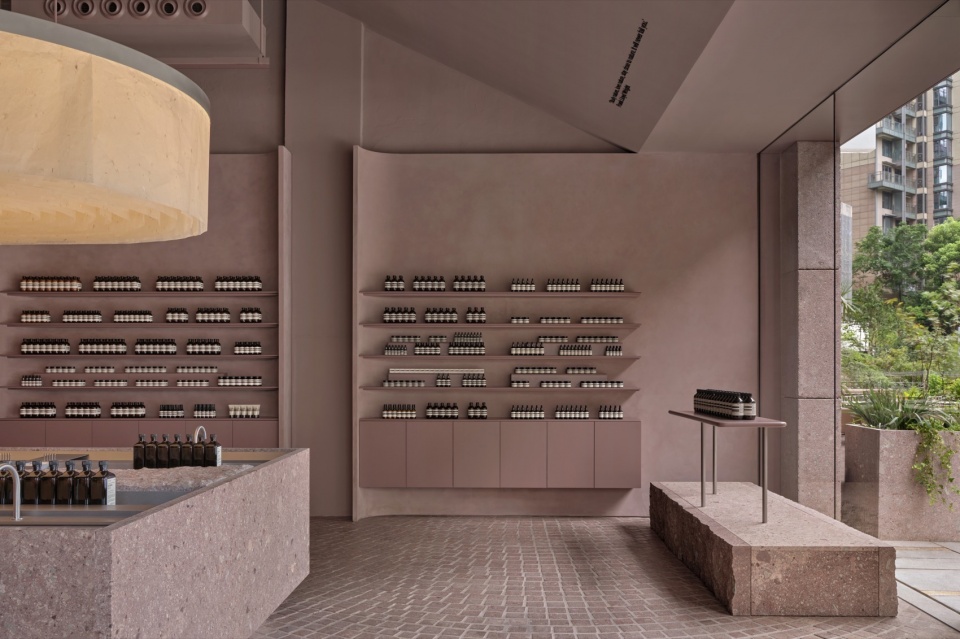
▼展架近景,Close-up of display stand © Jonathan Leijonhufvud, courtesy of Aesop
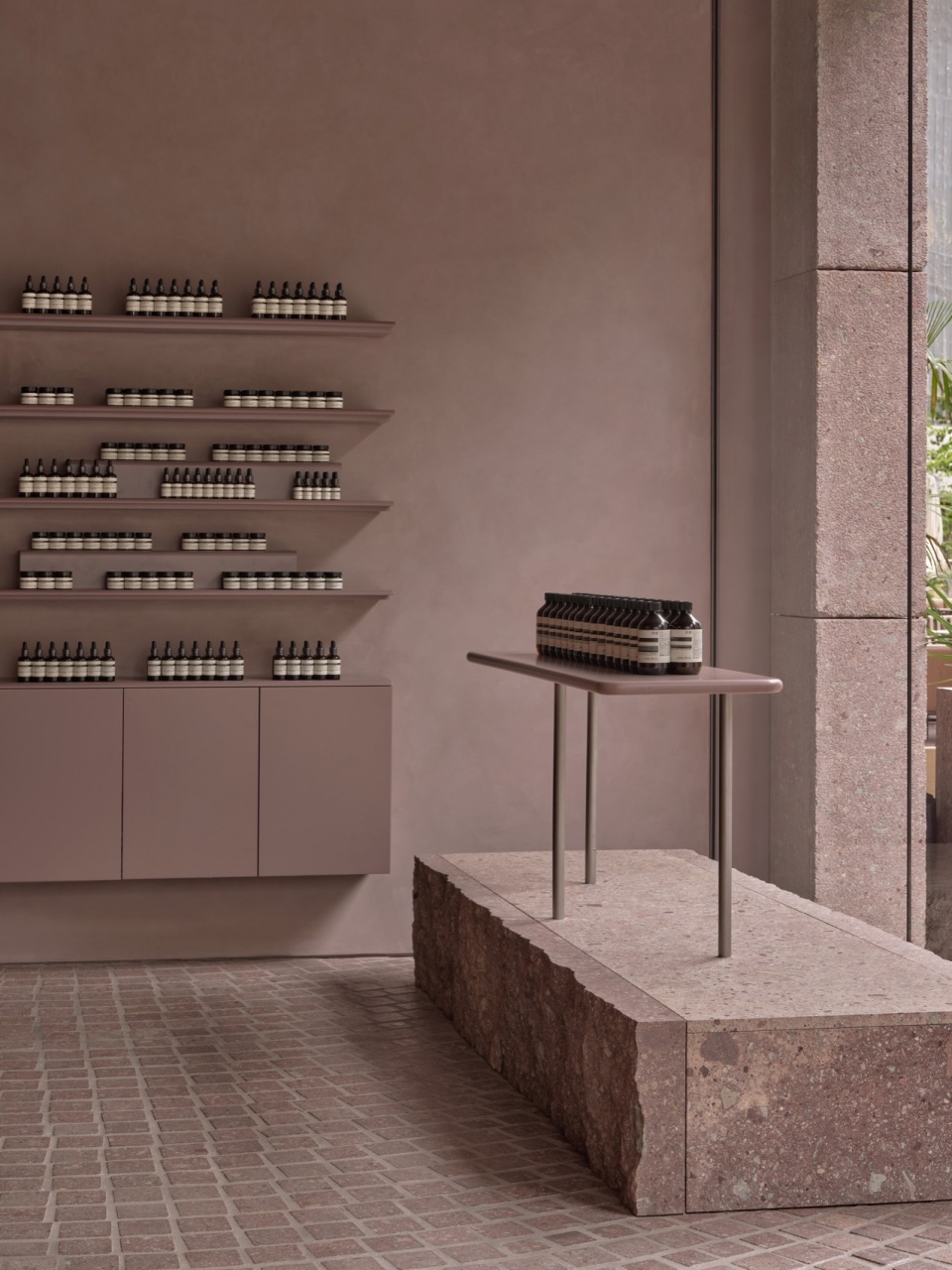
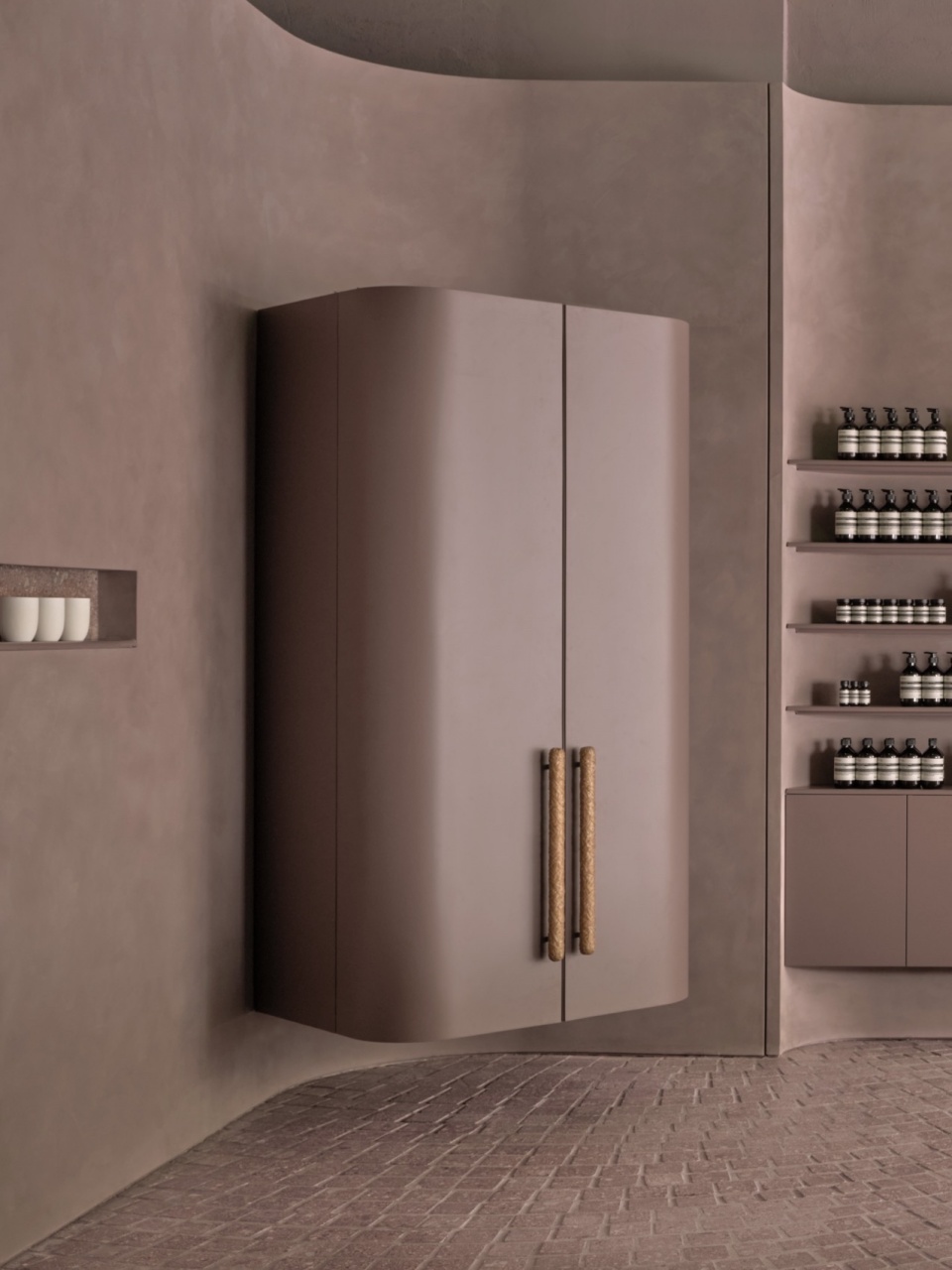
二.流动的空间
Flowing space
城市的商业街充满活力,却对应着复杂喧闹的环境。两边的商户都是餐饮店面,同时有沿街外摆,客流量极大。我们希望客人一进入场地就感到平静与愉悦,所以用柱廊和花池限定出入口庭院,可以坐下稍事歇息,让情绪平复舒展。高湖石成为庭院自然的底色,而两侧植物多选用原生本地物种,不同高度的植株与垂挂于石板上的藤蔓为庭院增加野趣。随着一天之中光线的变化和一年之中四季的变化,庭院会呈现不同的景象,灵动而静谧。
▼石材分析,stone analysis © 刷刷建筑
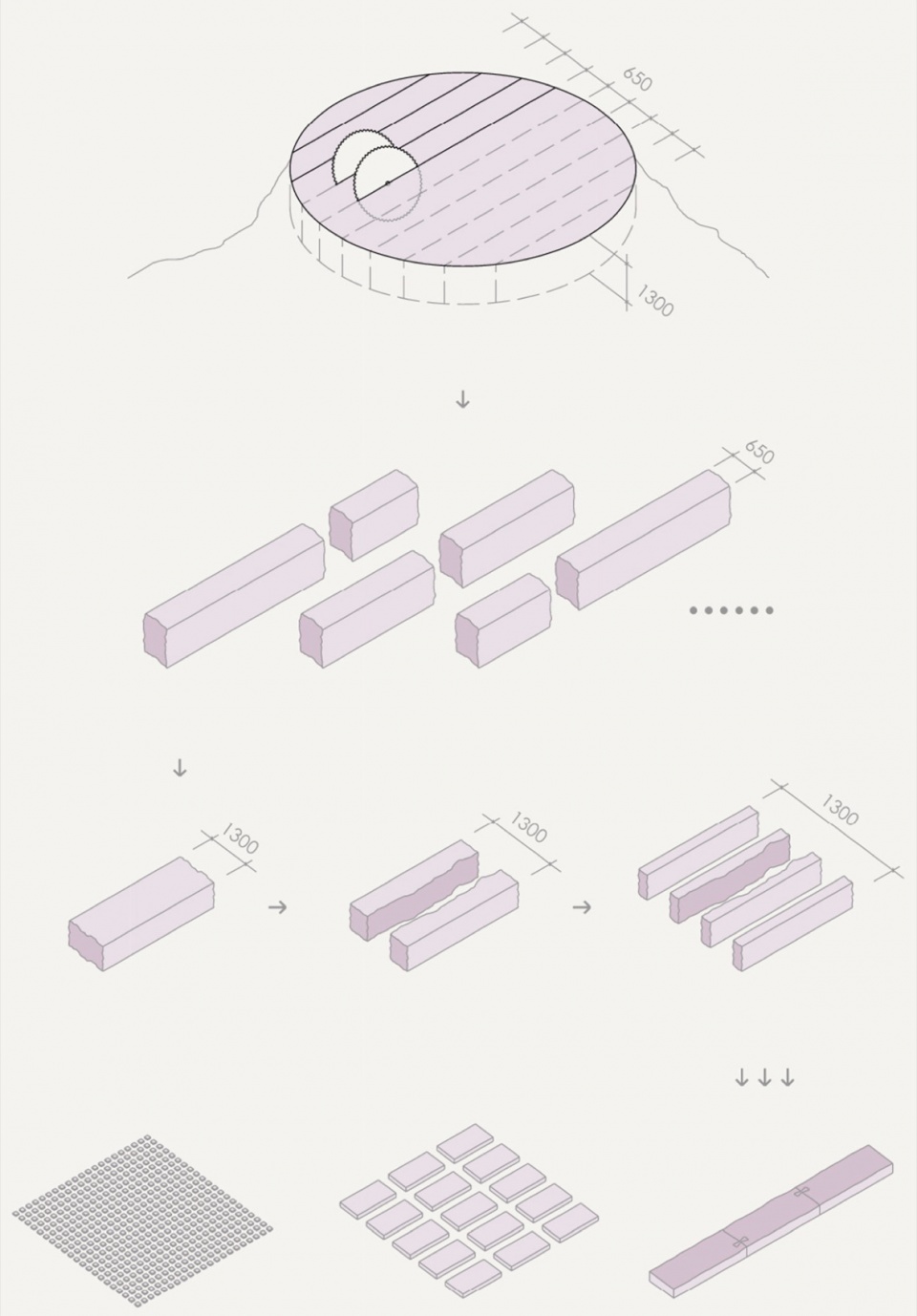
Urban commercial streets are full of vitality, while it corresponds to the complex and noisy environment. Our site locates in between restaurant neighbors with outdoor stalls along the street, which also generates big customer flow. We hope that guests will feel calm and pleased as one approaches the store. So stone colonnades and curving benches define the entrance domain, which also provide respite for weary wanderers. The Gaohu stones become the natural background of the courtyard, and the plants on both sides are mostly native local species. Plants of different heights and vines hanging on the stone elevation add natural wildness to the courtyard. With the changes of light throughout the day and the changes of the seasons throughout the year, the courtyard will present different scenes, quietly and vividly.
▼休息空间,Leisure space © Jonathan Leijonhufvud, courtesy of Aesop
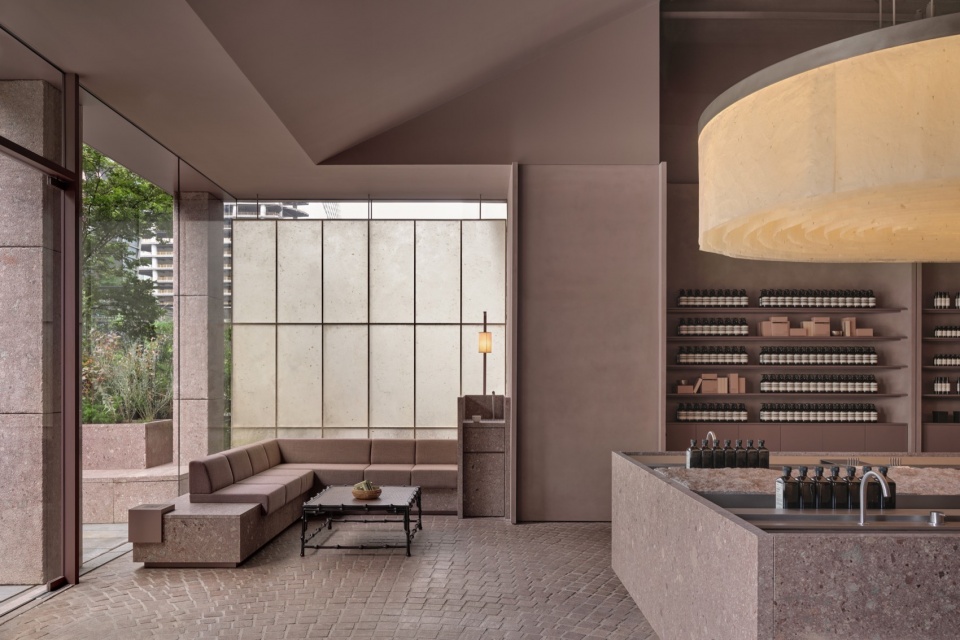
穿过柱廊进入室内,空间以中央水槽作为主角展开。通过裸顶保证了6m的净高突出原始建筑体量,两侧的货架和整体空间保持与高湖石统一的色调。在中央水槽的后方,则保留了前使用者留下的旋转楼梯,二次利用将其作为限定空间的隔墙,自然的围合出了个人化水槽的区域。
Entering the interior through the colonnade, the space unfolds with the central sink as the protagonist. We ensured 6m height by not installing suspended ceiling to keep the original building volume. The shelves on both sides and the overall space maintained a unified color tone with the Gaohu stone. Behind the central sink, the spiral staircase left by the previous user was preserved and repurposed as a dynamic spatial element, its curving wall naturally defines the individual en-suite sink area.
▼休息空间近景,Leisure space close view © Jonathan Leijonhufvud, courtesy of Aesop
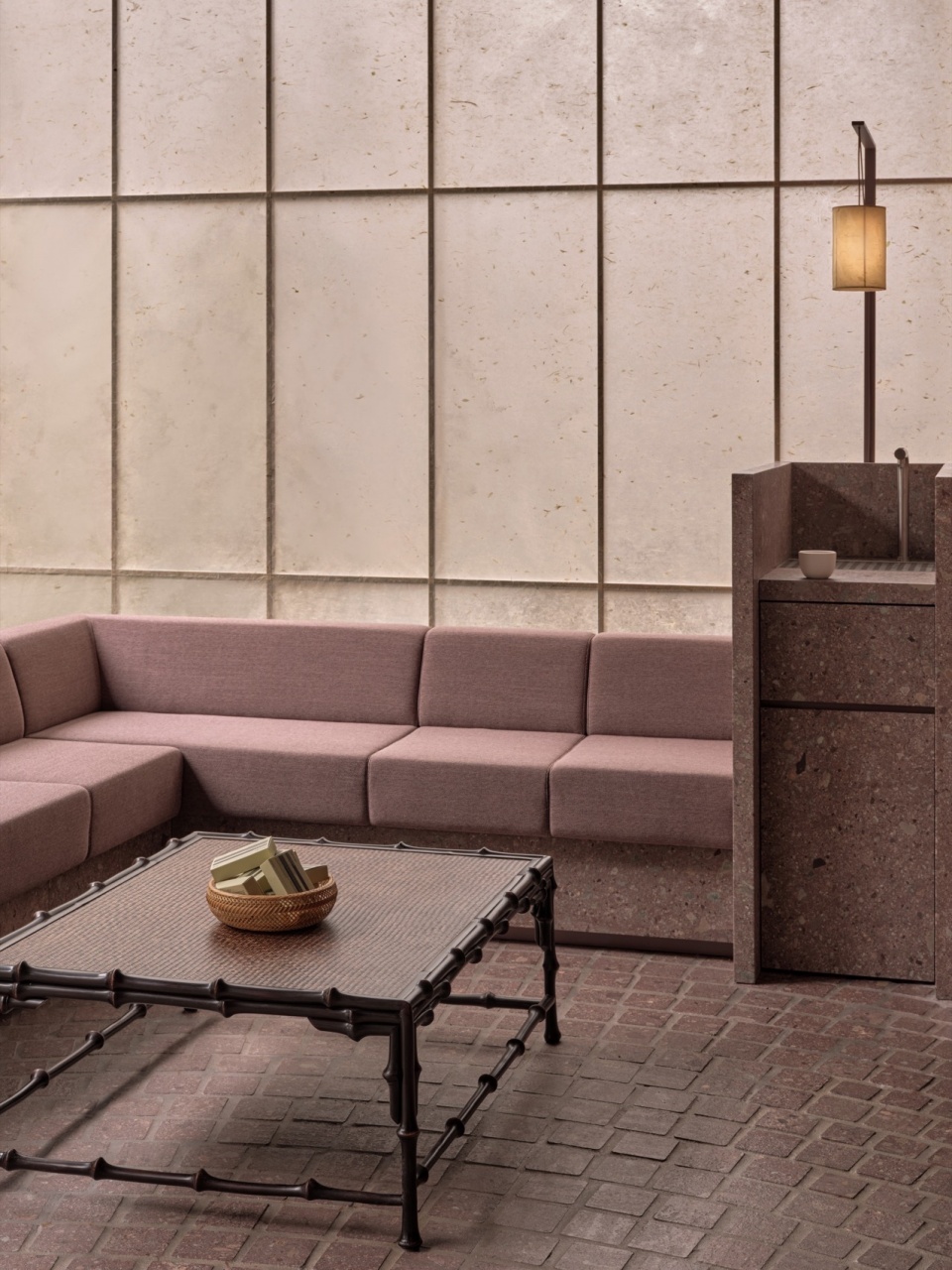
从室外到室内,弧形的线条将空间相互渗透串联成整体。室外弧形的花池保证了庭院的私密性,旋转楼梯在外表面形成的曲面张力自然的将人引导向店铺深处,室内地面遵循水波涟漪的纹路铺设的小石块为整体空间增加流动的节奏。
Throughout outside to the inside, the curved lines connect the spaces into a whole. The outdoor curved flowerbed ensures the privacy of the courtyard. The curving wall formed by the spiral staircase guides visitors deeper into the deeper of the space. The small stones laid on the indoor floor following the pattern of water ripples add a flowing rhythm to the overall space.
▼私密空间,Private space © Jonathan Leijonhufvud, courtesy of Aesop
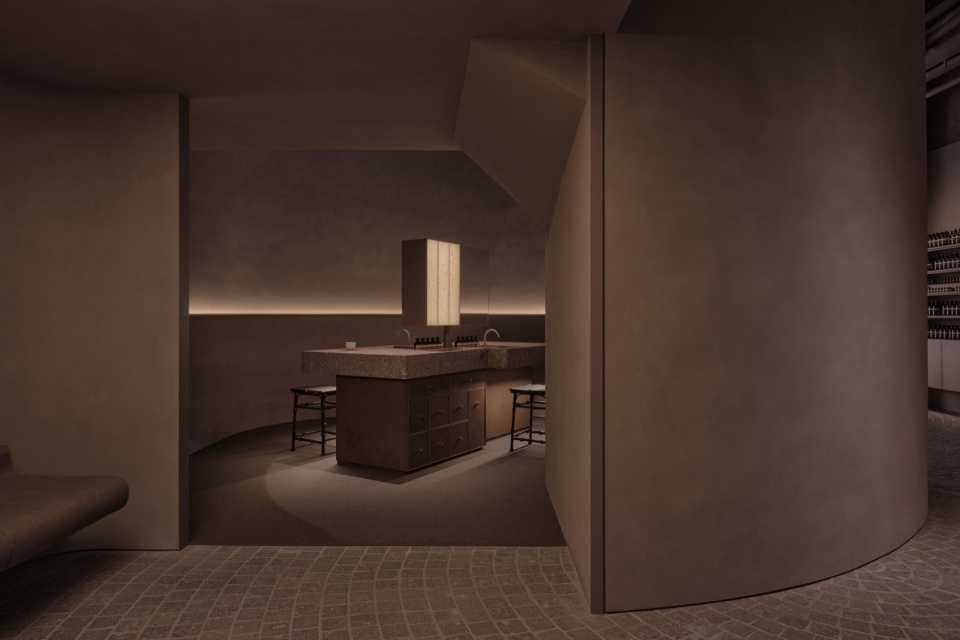
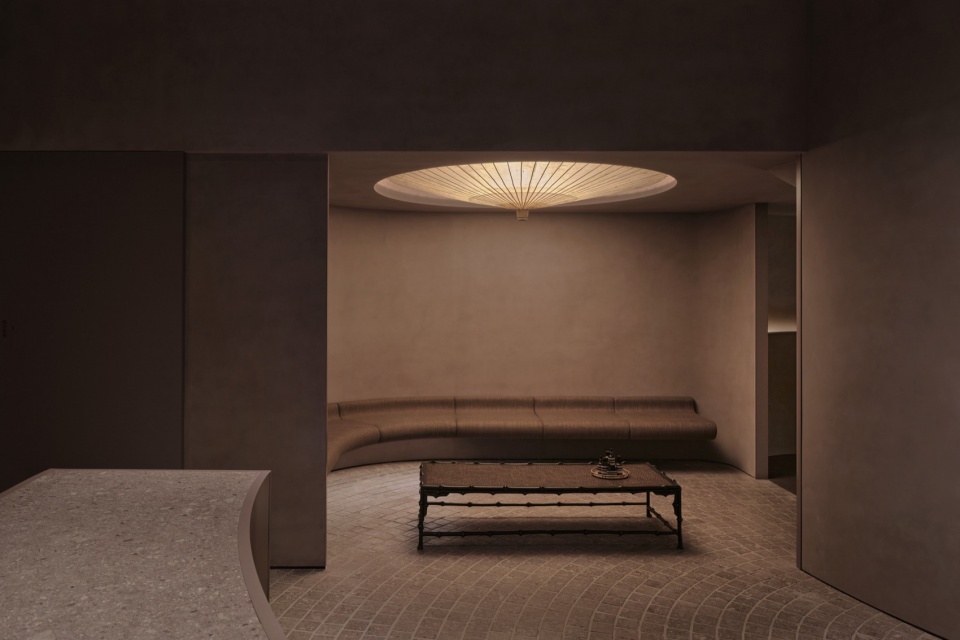
▼私密空间近景,Private space close view © Jonathan Leijonhufvud, courtesy of Aesop
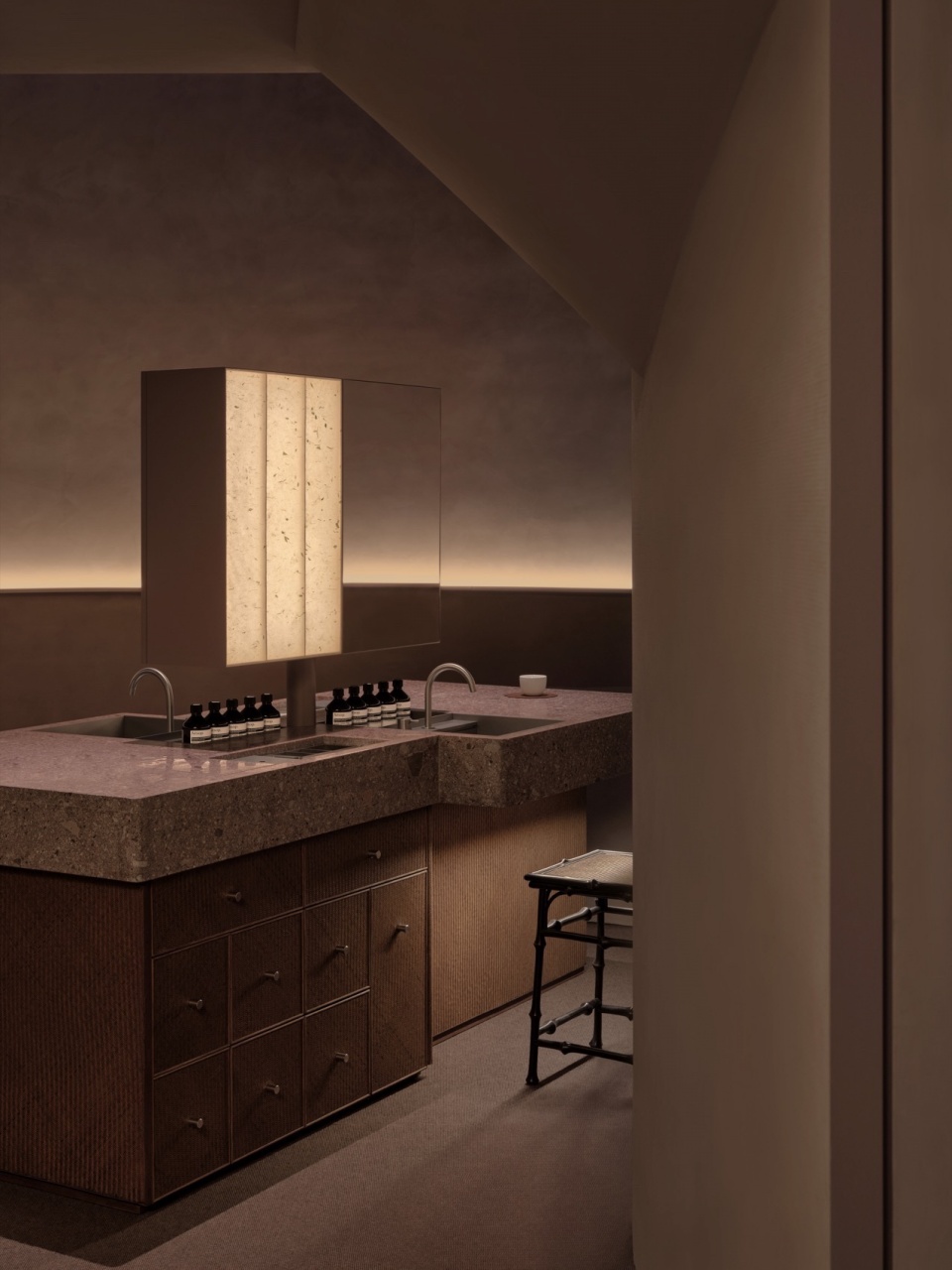
三.手工艺的温度
Warmth of craftsmanship
江南水乡杭州物产丰富,且拥有大批仍旧活跃于当下的传统手工艺人。余杭油纸伞已有250年历史,在空间中我们多处运用了本地制作油纸伞的纸张,造纸过程中加入的龙井茶叶片使其更显特别。最主要的是中央水槽上方的吊灯,油纸从上空一层一层垂下,灯光从中晕染开来,为传统材质塑造出现代的形体。开业后由于两侧空调的风轻吹向纸张,纸面缓缓摇曳形成犹如水面一般的波动,是未预料到的惊喜。而在空间深处的座位区,运用余杭传统工艺制作的两米直径的大型油纸伞亦被加工为“伞灯”,提供温暖光线的同时,完整的展示手工竹骨架的结构美感。
▼材质分析,material analysis © 刷刷建筑
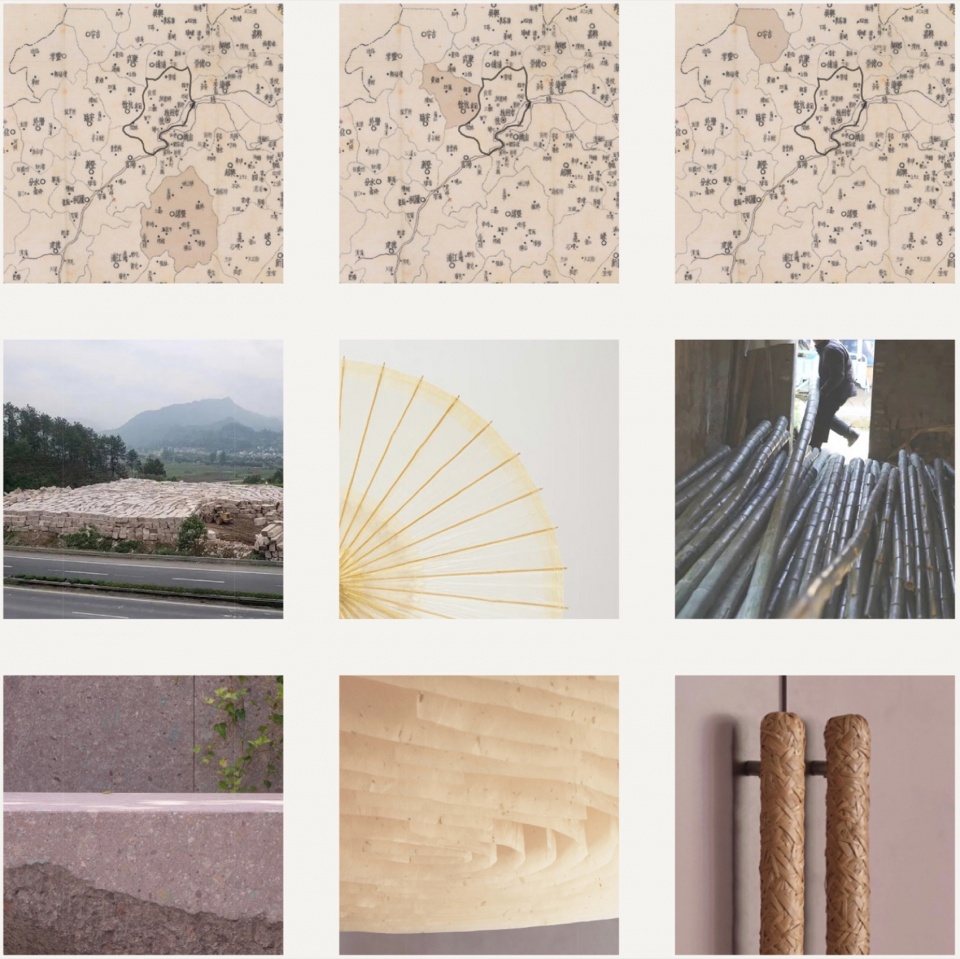
Hangzhou is rich in products and has a large number of traditional artisans and craftsmen. Yuhang oil-paper umbrellas have a history of 250 years. We used traditional local oil-paper in many places in the store. The local green tea leaves added in the paper making process make it more iconic. The most object is the ample chandelier above the central sink. The oil-paper hangs down from the ceiling layer by layer, and the light spreads from it, creating a modern form for the traditional material. The wind from the air conditioners on both sides blew gently towards the paper, paper swayed slowly to form a wave like the surface of the lake, which was also an unexpected surprise. In the seating area deep in the space, a 2m diameter oil-paper umbrella made by Yuhang traditional artisan has been converted into a light fixture, which provides warm light while fully displaying its structural beauty of the handmade bamboo frame.
▼材质细部,Material detials © Jonathan Leijonhufvud, courtesy of Aesop
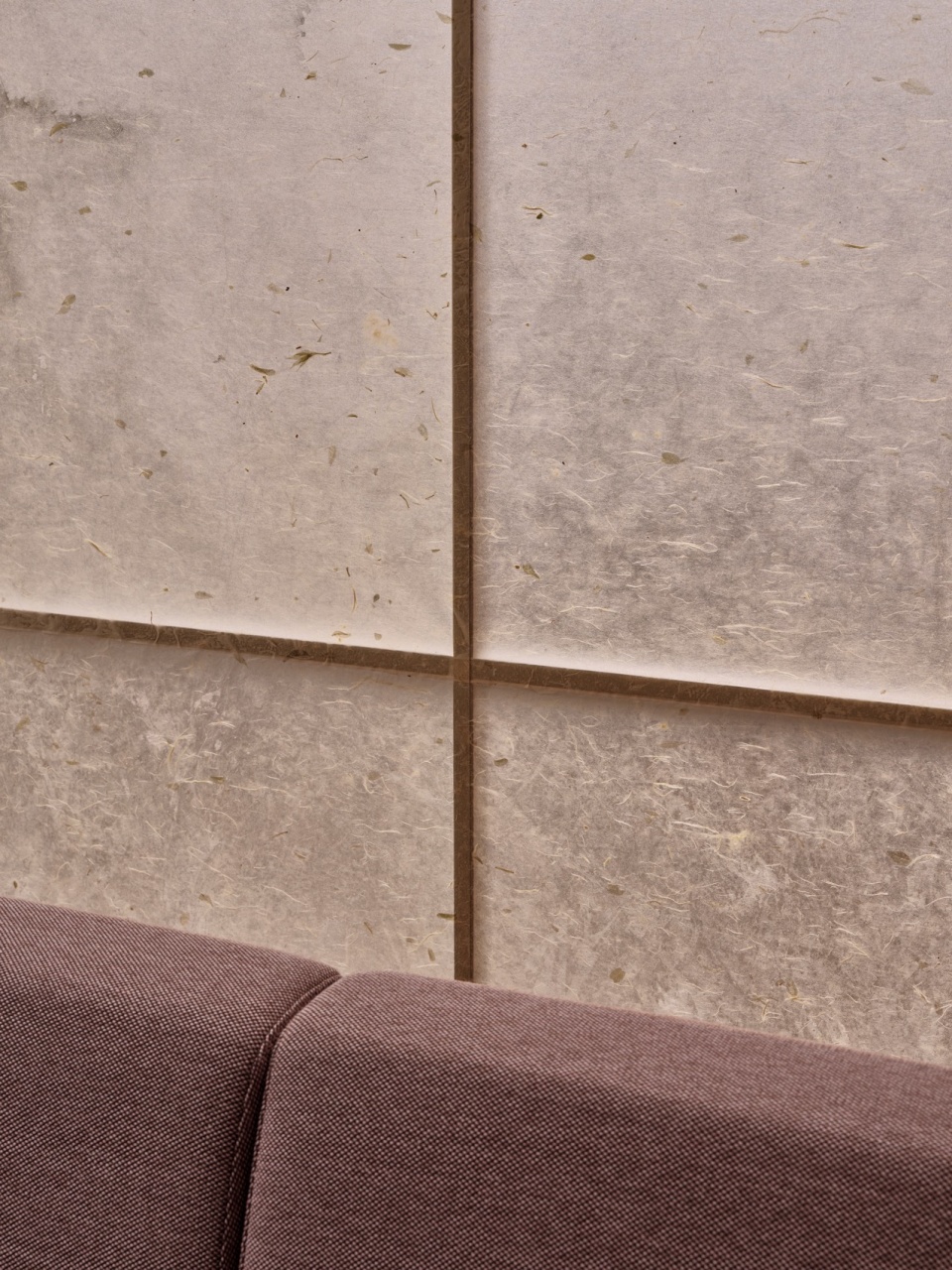
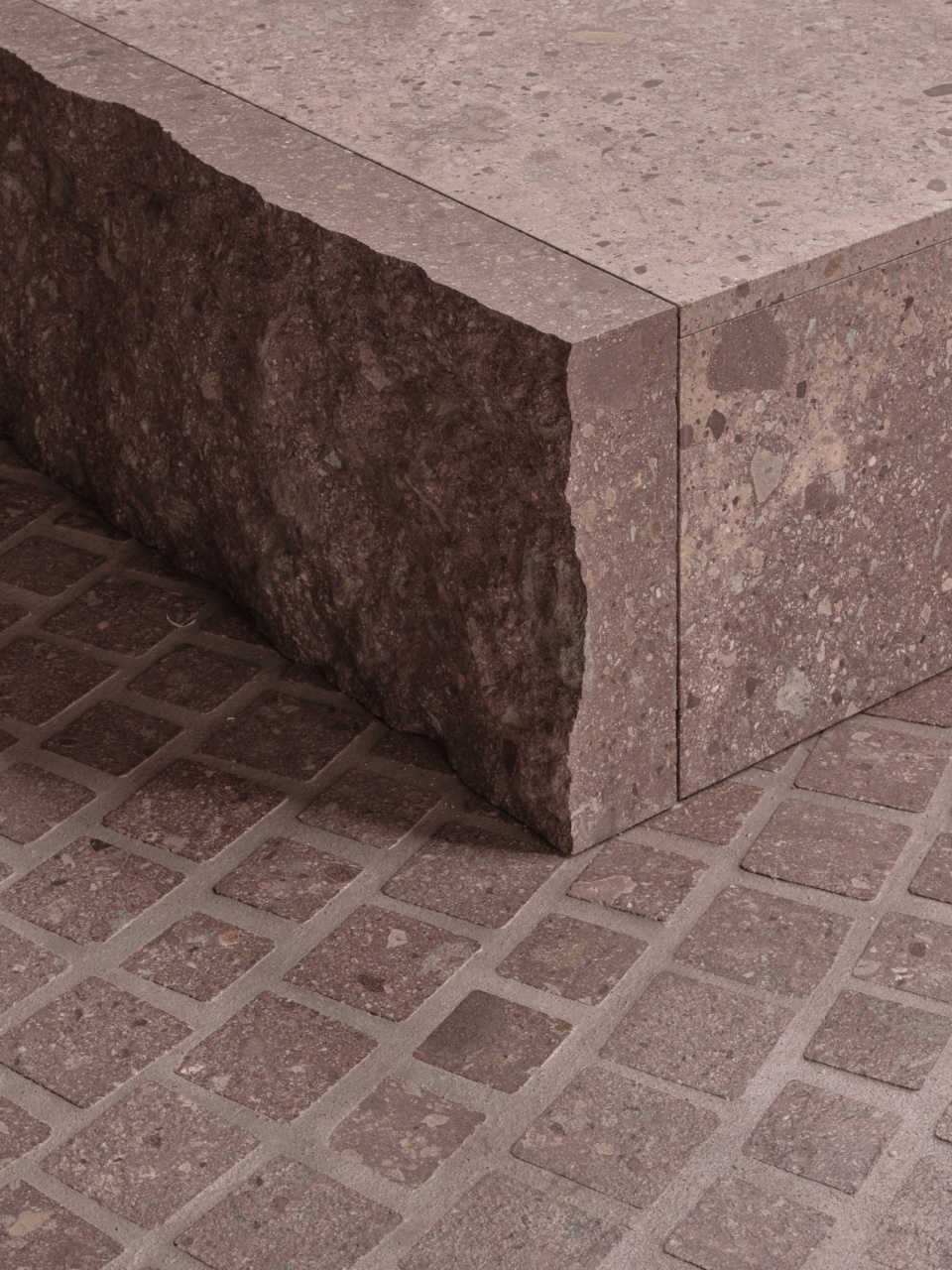
同时我们与竹编手工艺人合作,为空间各处增加了有趣的本地化细节。香氛衣柜强调打开的动作,于是我们将其把手用竹条包裹,增加客人与材料的接触。竹编纹理在空间最深处的休息区和个人化水槽空间密集出现,相比主空间材料的厚重表达,则更为强调亲切的包裹感。
At the same time, we worked together with bamboo craftsmen to add interesting local details to various parts of the space. The fragrance armoire emphasizes the action of opening, so we wrapped its handle with bamboo strips to increase the contact between guests and the material. The woven bamboo texture appears densely in the seating area and en-suite sink space at the deepest part of the space. To balance the gravitas of the pervasive stone, it emphasizes the intimate wrapping feeling.
▼平面图,plan © 刷刷建筑
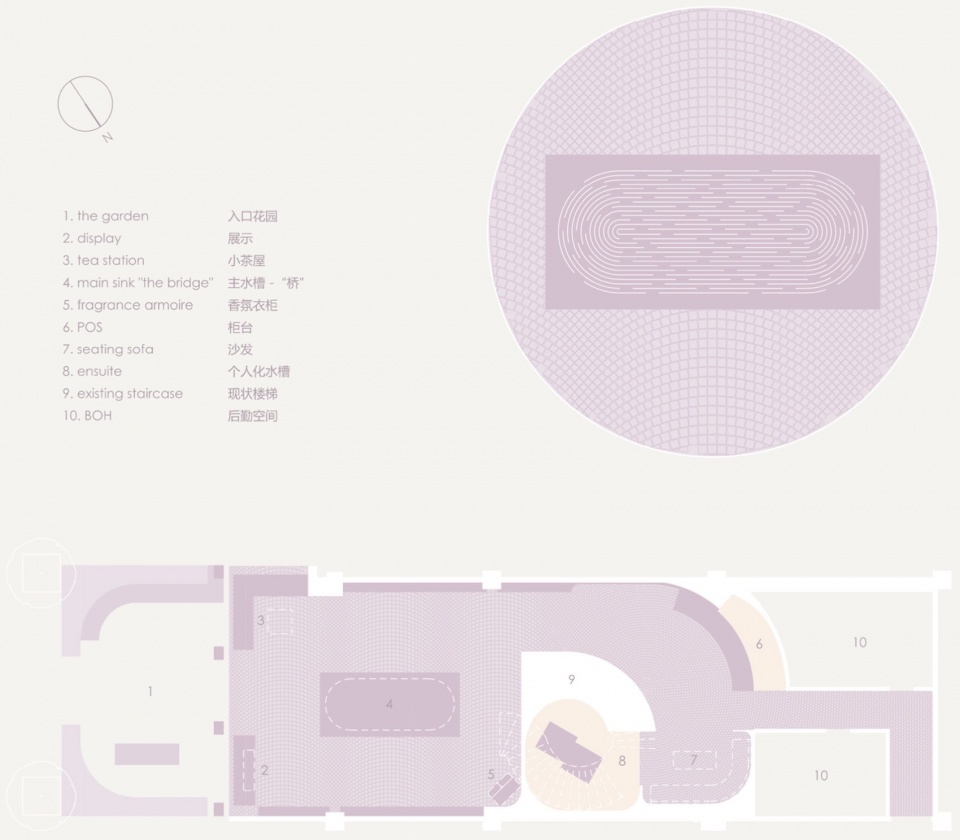
项目名称:伊索杭州店
项目类型:室内设计 景观设计
项目位置:杭州
设计和完成年份:2023.12-2024.07
建筑面积:224平米
项目地址:浙江省杭州上城区富春路701号
施工单位:琰麓
设计合作单位:Calathea(灯光设计);Boll是园(植物选型)
手工艺人:刘伟学(油纸伞);玩竹公社(竹编把手)
摄影版权:雷坛坛,由伊索提供










